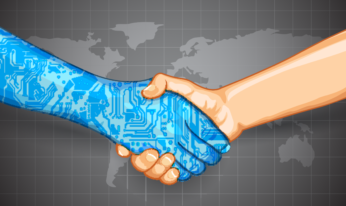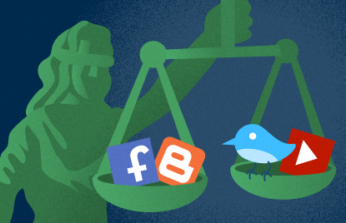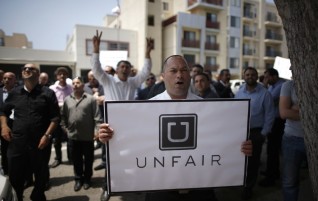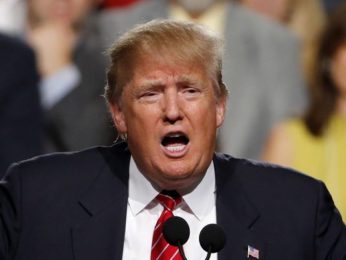
By: Hsiao-Han Wang,
The term “smart contract” refers to “the use of computer code to articulate, verify and execute an agreement between parties.”[1] Unlike traditional contracts, smart contracts are written in codes, stored on distributed ledgers (like a database that can store all sorts of information) and secured by cryptographic keys, which make them immutable and help to avoid malfunction.[2]
The idea of a smart contract is not new, but the development of “blockchain” technology provides a way for this concept to be put into practice.[3] Blockchain is a technology that creates “a decentralized, digital ledger that encrypts, registers, and verifies transactions” through a peer-to-peer system, “essentially making public (or private, if you want) record of transactions, stored on thousands of different computers.”[4] With these characteristics, smart contracts allow the transactions over computer system “be verified, monitored, and enforced without the presence of a trusted third party or central institution.”[5] Smart contract requires no direct human involvement after it has been made a part of the blockchain, and will automatically execute once the pre-set conditions are met.[6] As a result, smart contracts have the potential to avoid risks on implement of contracts, to improve efficiency and to reduce transaction costs in financial or commercial agreements.
As blockchain technology continues to advance, some people have begun to believe that smart contracts will soon become alternatives to traditional contracts.[7] People who embrace technologies are excited about the possibility that smart contract might encode and perform complex agreement automatically.[8] However, there are still some potential practical risks and problems that can arise from the use of smart contracts.
Coding errors and software bugs may be among the key concerns that users have. For example, just like traditional contracts where words and specific terms are used in the agreement, the code base may not perfectly reflect what the parties understand to be their agreement, or the effect of the code base may be misrepresented by a party to be different to what it actually is.[9] Since the execution of smart contracts relies on computer network, cybersecurity is also a potential risk area that should be taken into consideration. A $50 million hack happened to DAO, a decentralized investment fund which was funded by thousands of people raising about $160 million with code based on smart contract protocol, is an example showing the problem of lacking proper programming to secure the system against external attack.[10] Some smart contracts that rely “real-time data feeds” to execute entire or certain parts of the agreement may also face the risk that potential manipulation of underlying data feeds and indices will trigger real-time contract execution.[11]
In addition to the technology, other issues also need to be considered when disputes between parties arise. When parties take legal action, questions such as where to bring suit or what law to apply come into play. There is currently no international internet law. Therefore, negotiation on jurisdiction may need to be set up beforehand when parties involved are from different states or even nations.[12]
The underlying characteristics of blockchain and smart contracts bring up potential legal issues as well. For example, one of the characteristics of blockchain is its transparency, which allows users to gain access to any permanent records on blockchain.[13] While the records are anonymously stored, which does not show the identity of transactions, information regarding the detail of transactions allow others to guess on it.[14] This, therefore, may raise the privacy concerns for contracts and property ownership, after all, some financial and commercial data is highly sensitive.[15] Another example may be deriving from the character of decentralization. Blockchain allows people to create a new type of entity, which is called “decentralized organization.” Such organizations are composed with “autonomous individuals given discrete tasks and rewards,” and operate in the way more like corporations but without formal legal structure.[16] Lack of formation initially does not sound like a big deal in terms of day-to-day operation. It would become a serious problem for participants, however, when this kind of organization gets sued in the court. Since it is a new type of entity, what law or classification should apply to them is still a question up in the air. But without formalized legal structure, courts are likely to hold individuals in the organization personally liable.[17]
The term “smart contract” does not have a settled definition yet, and the concept is apparently still at an early stage of development. However, as the technology progresses, state and federal government may need to develop a set of statutes or regulations to deal with various possible situations in the future to address risks and issues that may result from this new type of contract. It may be fair to say that smart contracts might be able to replace some of the functions of traditional contracts in the future. Nonetheless, it also creates new legal issues which are still waiting for a more definitive and suitable solution to come by.
[1] Josh Stark, How Close Are Smart Contracts to Impacting Real-World Law?, CoinDesk (Apr. 11, 2016, 2:00 PM), http://www.coindesk.com/blockchain-smarts-contracts-real-world-law.
[2] See Kate H. Withers, Smart Contracts: Opportunities and Legal Risks in FinTech, National Law Review (Nov. 8, 2016), http://www.natlawreview.com/article/smart-contracts-opportunities-and-legal-risks-fintech.
[3] See Lee Bacon, Nigel Brook & George Bazinas, “Smart Contracts”: Where Law meets Technology, Clyde & Co (June 22, 2016), http://www.clydeco.com/insight/article/smart-contracts-where-law-meets-technology.
[4]Casey C. Sullivan, What Is Blockchain? A Lawyer’s Guide, FindLaw (Nov. 14, 2016, 10:58 AM), http://blogs.findlaw.com/strategist/2016/11/what-is-blockchain-a-lawyers-guide.html; see also Joe Dewey & Shawn Amuial, What Is A Blockchain, Big Law Business (Sept. 22, 2015), https://bol.bna.com/what-is-a-blockchain.
[5] Benjamin Beck & Dr. Ulrich Worm, Blockchain-Based Applications – Evolving Legal Issues, Mayer Brown (Sept. 8, 2016), https://www.allaboutipblog.com/2016/09/blockchain-based-applications-evolving-legal-issues.
[6] See Joe Dewey & Shawn Amuial, What Is a Smart Contract?, Big Law Business (Sept. 24, 2015), https://bol.bna.com/what-is-a-smart-contract.
[7] See Stark supra note 1.
[8] See Cheng Lim, TJ Saw & Calum Sargeant, Smart Contracts: Bridging the Gap Between Expectation and Reality, Oxford Business Law Blog (July 11, 2016), https://www.law.ox.ac.uk/business-law-blog/blog/2016/07/smart-contracts-bridging-gap-between-expectation-and-reality.
[9] See id.
[10] See Klint Finley, A $50 Million Hack Just Showed That the DAO Was All Too Human, Wired (June 18, 2016, 4:30 PM), https://www.wired.com/2016/06/50-million-hack-just-showed-dao-human; See also Jamie Redman, How Should We Prepare Smart Contracts to Replace Law Firms?, Bitcoin.com (June 26, 2016), https://news.bitcoin.com/smart-contracts-replace-law-firms.
[11] See Withers supra note 2.
[12] See Richard Howlett, A Lawyer’s Perspective: Can Smart Contracts Exist Outside the Legal Structure?, Bitcoin Magazine (July 11, 2016, 6:52 PM), https://bitcoinmagazine.com/articles/a-lawyer-s-perspective-can-smart-contracts-exist-outside-the-legal-structure-1468263134.
[13] See Peter Kirby, Blockchain Transparent Lending: How Accountable Lending Systems Can Prevent A ‘Big Short’ For The Digital Age, Blockchain News (Feb. 24, 2016), http://www.the-blockchain.com/2016/02/24/blockchain-transparent-lending-how-accountable-lending-systems-can-prevent-a-big-short-for-the-digital-age.
[14] See David Cornwell & James Lawrence, Blockchain – emerging legal issues, Lexology (Oct. 12, 2015), http://www.lexology.com/library/detail.aspx?g=6e5a942e-94ea-4891-a07c-a9d96343dc95.
[15] See Id.
[16] Stephen D Palley, How to Sue A Decentralized Autonomous Organization, CoinDesk (Mar. 10, 2016), http://www.coindesk.com/how-to-sue-a-decentralized-autonomous-organization/#; see also Cornwell supra note 14.
[17] See Palley supra note 16.
Image Source:
http://bluzelle.com/wp-content/uploads/2015/09/smartcontracts.png





